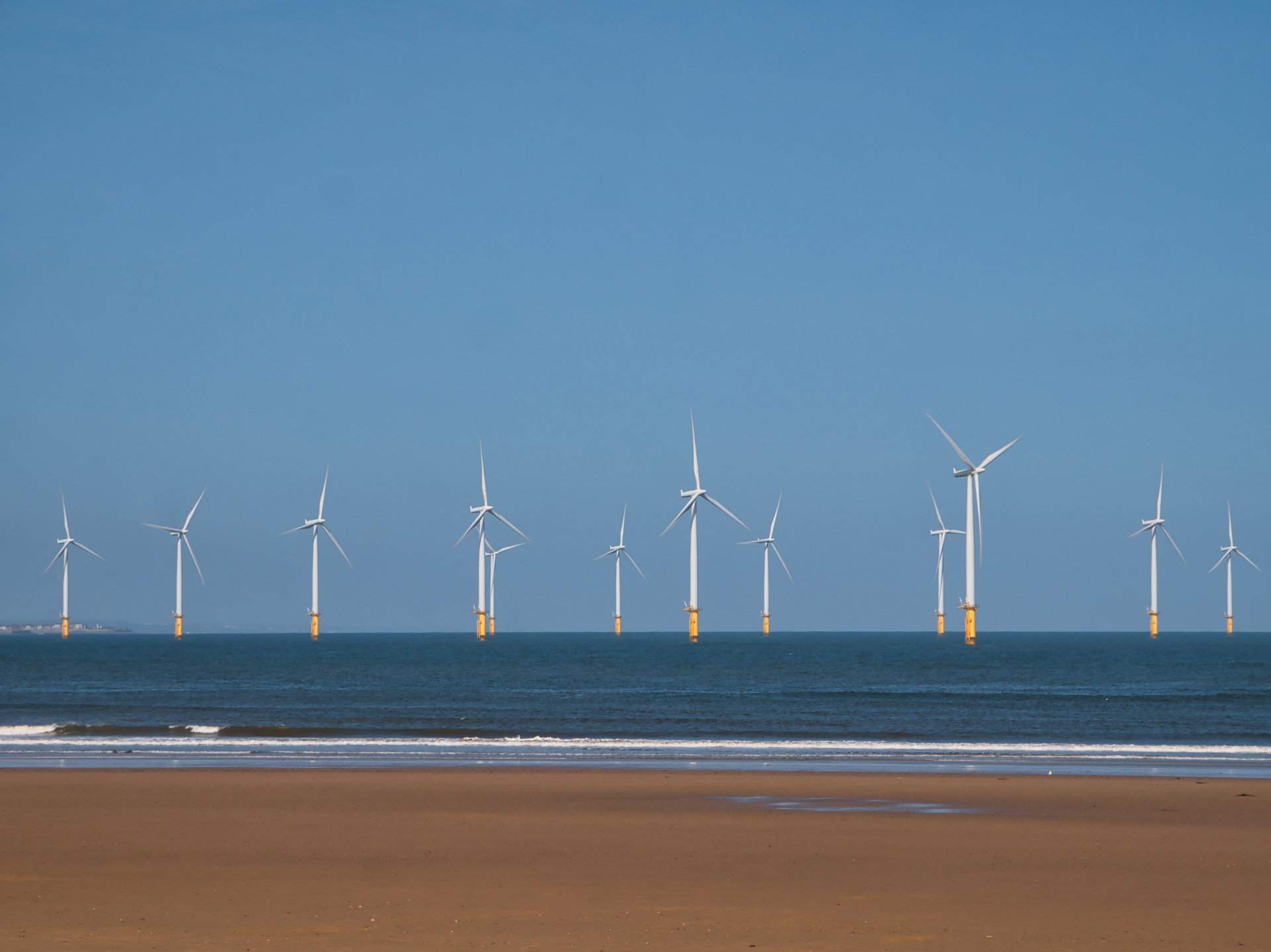The UK Infrastructure Strategy has now been published alongside the Comprehensive Spending Review and points to ‘significant investment in offshore wind and into modern ports and manufacturing infrastructure to expand the share of energy generation from renewables’.
Earlier this month the Prime Minister committed to a target of 40GW of offshore wind by 2030 with significant expansion expected thereafter as part of his 10-point plan. The government also launched a review into the design of the offshore transmission network during the summer, and, on 5th November, Energy Minister Kwasi Kwarteng announced to parliament that ‘the argument for some form of offshore network system has been won’.
Similarly, the Europe Commission announced on 19th November an Offshore Renewable Energy Strategy that targets 60GW of offshore wind by 2030 and 300GW by 2050. To enable that growth, the Commission argues, “a more rational grid planning and the development of a meshed grid is key”.
Back in 2014, E3G and Imperial College London published a report pointing out that
‘the North Seas contain vast and largely untapped renewable energy resources……..analysis has demonstrated the significant advantages of taking a more strategic and co-ordinated approach to network planning in the North Seas region.’
The report also went on to argue that ‘the current nationally-focused, and largely incremental, approach to planning the offshore electricity network risks foreclosing the option for high levels of offshore wind deployment over the coming decades’ and ‘judicious use of anticipatory investments can keep offshore wind options open at relatively low cost’.
This report was shared and discussed with officials and special advisors in government and Ofgem and launched at an event in parliament attended by MPs and other stakeholders. However, despite the absence of challenge to the arguments presented, it failed to gain sufficient traction amongst policy makers and politicians.
For some decision-makers, the prospects of large-scale deployment of offshore wind seemed so unlikely that developing the option of an offshore grid network was deemed unnecessary. For others, making changes to the UK’s nascent offshore transmission regime simply appeared too disruptive or too difficult to achieve.
In consequence, the UK has continued to develop a growing pipeline of offshore wind projects on a bespoke basis, incurring additional cost and unnecessary environmental impacts on the East Coast of England as each windfarm is individually connected to the onshore power network.
Indeed, we now find ourselves in the situation where an immediate switch from the current approach to that of an offshore network would halt the progress of many projects under development and compromise the ability to meet the 2030 target.
So, what has changed?
Why did this proposal prove unappealing six years ago but is now widely accepted to be the best approach?
The obvious answer is that the costs of offshore wind have reduced significantly, and the prospect of large deployments appears economically more attractive. In 2014, the UK government awarded contracts for difference for offshore wind at £140-150/MWh, but by 2019 this fell to below £40/MWh.
Also, the commitment to achieve net zero emissions by 2050 has made it impossible to ignore the need for radical change to the energy system and wider economy. Indeed, it is difficult to imagine the much-vaunted hydrogen economy having any substance without massive production of renewable electricity from offshore wind.
However, these excuses mask a more fundamental issue that must be addressed if the net zero goal is to be realised. If this year has taught us anything, it is to remind us that we live in a very uncertain world. Whilst a major role for offshore wind energy looks like an increasingly good bet, other disruptive technologies are under development and could potentially achieve scale at lower cost.
The challenge we face is the need to make big strategic decisions whilst major uncertainties remain. The requirement to start replacing fossil fuelled (primarily gas) boilers in homes is perhaps the best current example of this challenge. There is neither the time nor the money available to keep all options open until big uncertainties have disappeared. Upgrades to the network infrastructure backbone of the energy system can take a decade to plan and build.
Failure to make the necessary preparations will effectively rule out options – or, in the case of offshore wind, make them more expensive and less environmentally friendly.
Fortunately, taking strategic decisions about the energy system in the face of uncertainty does not need to be a big gamble provided the right foresight and infrastructure planning tools are used. The UK remains in the vanguard of technical (and social) research and innovation related to the net zero transition.
What is missing is a centre of expertise that is constantly appraising and learning from latest developments. If such a body is established, it could be responsible for developing latest best views of future technology costs and deployment potentials. It would be able to recommend where investment is required to keep options open, say in infrastructure or innovation, and where it is necessary to make choices.
A second safety net is provided by the way infrastructure is planned. It is not necessary to assume everything about the future is known and commit unreservedly to backing the winners you have picked. Network system architects can adopt a ‘least regrets’ approach where infrastructure can be easily extended to cope with expected developments but the costs of the world going in a different direction are low.
The E3G and Imperial College analysis calculated that the worst-case cost of an early offshore grid buildout from 2015 would have been around £1bn over the period out to 2040. The savings, however, associated with more ambitious outcomes such as that now adopted by the Prime Minister would have been in the £20-£70bn range. The fear of losing £1bn have already cost us dearly.
We should not make the same mistake again.
This article was originally published in Cornwall Insight.
Photo by Alan on Adobe Stock.



